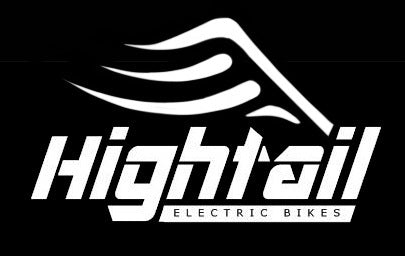DRIVE TYPES EXPLAINED
MID-DRIVE BOTTOM BRACKET MOUNTED

Mid Drives are found in many electric bikes and electric bike kits. In a mid drive bike, a motor is added (somewhere about the middle of the bike) to drive (with an additional belt or chain) the pedal spindle. The pedal spindle is also driven by the pedal chain ring (that's the big sprocket/gear attached to the pedal spindle that your pedal crank arms attach to). So the mid drive motor drives your pedal spindle to assist your pedaling. This type of drive is often incorporated in DIY kits as the motor drive assembly can mount directly to your bottom bracket. The bottom bracket is the portion of a bike frame where your pedal axis is. ________________________________________________________________
MID DRIVE SWING ARM MOUNTED

In a Swing Arm Drive the motor is mounted to the swing arm and a singular chain (or belt) then drives the rear wheel. This style bike will have reduced maintenance and higher reliability than classic mid drive bikes. The reason is the motor is not driving the rear wheel through all of the other components in a classic mid drive arrangement (creating high stress on components originally designed for foot power stress--not the higher stress caused by high power motors). The advantage of swing arm drive bikes that do not have a pedal option is the mechanics are greatly simplified. On a swingarm mounted mid drive the motor moves up and down with the swingarm and the distance from the motor shaft axis to the rear wheel axis does not change. So you will not need tensioning devices. While the motor moves up and down with the swingarm, typically the motor is located as close as possible to the swingarm pivot axis. This means the effects of the "unsprung weight" is minimized (see "HUB DRIVE" below).
________________________________________________________________
MID DRIVE MAIN FRAME MOUNTED

Another option for "mid drive" is where the motor is statically mounted within the main frame of the bike. In this case the motor may drive a single belt or chain that drives the rear wheel. If the motor shaft is not located at the center of the swingarm pivot axis, it is possible some type of tensioner is needed. This is because, when the swingarm moves up and down, the distance between the motor drive axis and the rear wheel axis will change in length causing the chain or belt tension to become looser and tighter while going over bumps (which is, of course, undesirable). In the picture above the motor is not located at the axis of the swingarm pivot. Rather, this design incorporates another belt drive from the motor to an idler gear located at the axis of the swingarm (not seen in this photo as it is on the opposite side of the bike). In the scenario it is possible to incorporate some gearing, likely a gear reduction.
________________________________________________________________
HUB DRIVE

Hub drive bikes have the drive motor built into the hub of the front or rear wheel. A hub motor is very simple in that it drives the wheel directly, thus no high stresses are added to any of the other drive components associated with (human powered) pedaling. Hub drives are the most common drive type for ebikes as they are mass produced (and thus less expensive), simple to implement into an electric bike design and have a good reliability record. With a hub drive it is simple to add the pedal option.
There are also some disadvantages with a hub drive. The motor, which is quite heavy, is located at the center of the wheel and thus it is what is referred to as "unsprung weight" (in a bike with suspension on the wheel that the motor is in). So when your wheel is bouncing up and down on the end of the swingarm, so is that 10+ pound motor. It is generally agreed that a hub drive is not desirable for off road riding and that hub drives are better suited for street riding (and maybe OK for a dirt road or a well groomed trail). Another disadvantage of hub drives is changing a tire on the wheel with the hub motor is much more of a task than a wheel without a motor.
